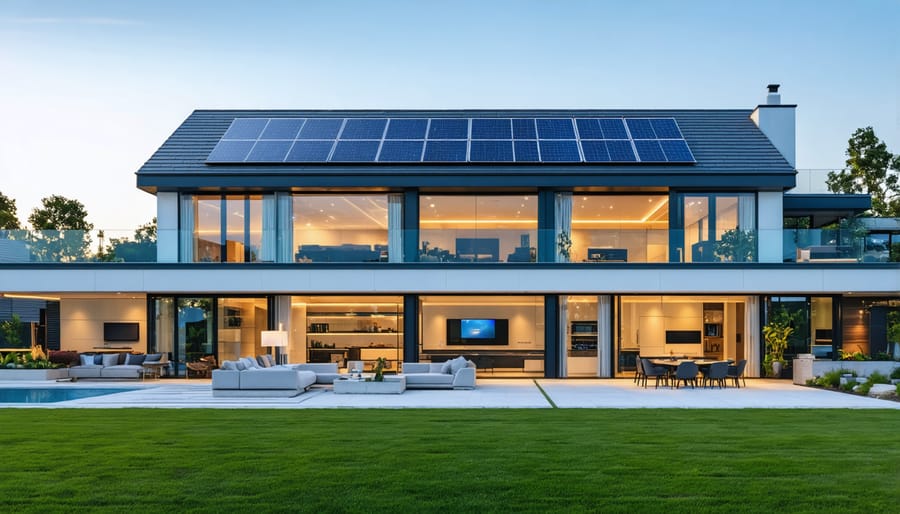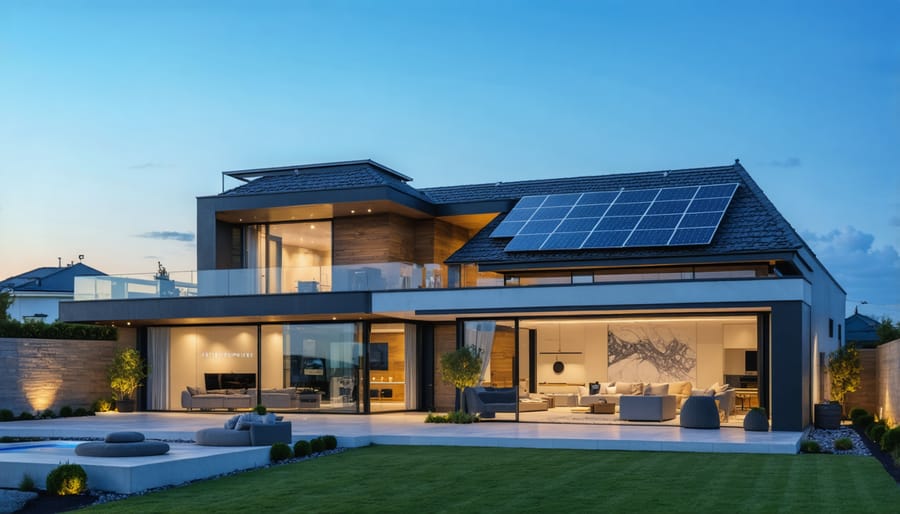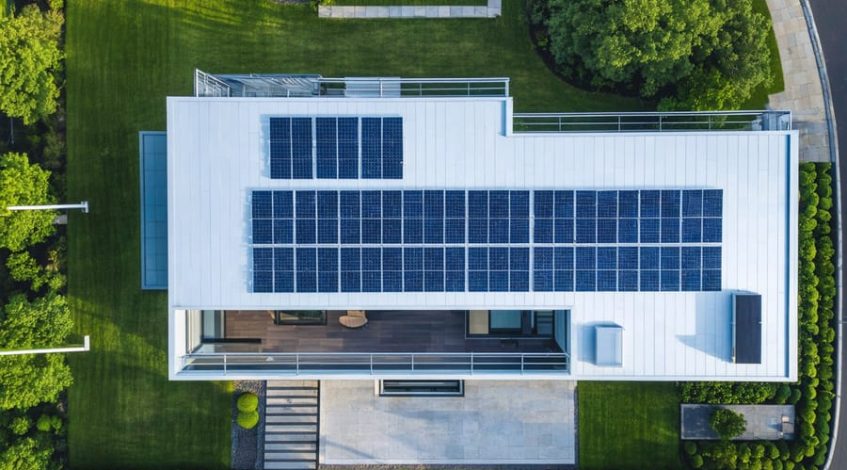Grid-interactive efficient buildings (GEBs) represent the next evolution in smart building technology, combining advanced automation, real-time energy management, and dynamic grid interaction to revolutionize how structures consume and distribute power. By optimizing energy use based on grid conditions, weather patterns, and occupancy data, these buildings can reduce operational costs by up to 30% while supporting grid stability and sustainability goals.
As utilities face mounting pressure to balance renewable energy integration with peak demand challenges, GEBs emerge as a critical solution, functioning as virtual power plants that can adjust their energy consumption and storage patterns in real-time. Through sophisticated sensors, predictive analytics, and automated controls, these buildings transform from passive energy consumers into active grid assets, capable of responding to utility signals within seconds.
For facility managers and property owners, GEBs offer unprecedented control over energy costs while creating new revenue streams through demand response programs and grid services. This intelligent infrastructure represents not just a technological upgrade, but a strategic investment in future-ready operations that align with evolving energy policies and sustainability mandates.
[195 words]

What Makes a Home Grid-Interactive?
Smart Energy Management Systems
Modern smart energy management systems form the technological backbone of grid-interactive efficient buildings, integrating sophisticated control algorithms with automated building operations. These systems utilize artificial intelligence and machine learning to optimize energy consumption patterns while maintaining occupant comfort and productivity.
Key components include smart thermostats, automated lighting controls, and advanced metering infrastructure that continuously monitor and adjust building operations in real-time. The system processes data from multiple sources, including weather forecasts, energy prices, and occupancy patterns, to make intelligent decisions about when to consume, store, or export energy.
Building automation platforms coordinate various subsystems through a centralized interface, enabling facility managers to monitor performance metrics and adjust settings remotely. These platforms can automatically respond to utility signals, participating in demand response events while ensuring minimal disruption to building operations.
The integration of IoT sensors throughout the building provides granular control over individual zones and systems, allowing for precise energy management based on actual usage patterns and requirements. This level of control helps eliminate energy waste while maximizing the benefits of renewable energy sources and storage systems.
Connected Appliances and Devices
Modern smart electric appliances are revolutionizing how buildings interact with the power grid. These Internet of Things (IoT) enabled devices include smart thermostats, connected water heaters, intelligent HVAC systems, and automated lighting controls that can respond to grid signals in real-time.
These connected devices utilize advanced sensors and communication protocols to optimize their operation based on grid conditions, energy prices, and user preferences. For example, smart thermostats can automatically adjust temperature settings during peak demand periods, while connected water heaters can heat water during off-peak hours when electricity rates are lower.
The true power of these devices lies in their ability to work together as an integrated system. Through building automation platforms, facility managers can orchestrate multiple appliances to create coordinated demand response strategies. This orchestration enables buildings to reduce energy consumption during high-demand periods while maintaining occupant comfort and operational efficiency.
Leading manufacturers are increasingly incorporating grid-interactive capabilities into their product lines, making it easier for building owners to implement these solutions without extensive retrofitting.

Financial Benefits of Grid-Interactive Homes
Demand Response Programs
Demand response programs offer significant financial incentives for building owners who participate in grid optimization efforts. These utility-sponsored initiatives typically reward participants for reducing energy consumption during peak demand periods, creating a win-win situation for both utilities and consumers.
Building owners can earn through various program types, including direct load control, time-of-use pricing, and capacity bidding programs. Direct load control allows utilities to automatically adjust smart thermostats and other connected devices during high-demand periods, offering fixed incentive payments. Time-of-use pricing programs provide reduced rates for shifting energy consumption to off-peak hours, while capacity bidding programs allow participants to earn by pledging specific load reductions during grid events.
The financial benefits can be substantial. For example, a typical commercial building participating in demand response can earn $25,000 to $50,000 annually, depending on size and location. Some utilities offer additional incentives for installing grid-interactive technologies, such as smart thermostats or energy storage systems, which can further enhance earning potential.
To maximize benefits, building owners should:
– Review available utility programs in their area
– Install necessary smart controls and monitoring systems
– Develop an energy reduction strategy
– Train facility staff on program participation
– Monitor and verify program performance
Most utilities provide free energy audits and technical assistance to help buildings optimize their participation in these programs, ensuring maximum financial returns while maintaining occupant comfort.
Energy Cost Reduction
Grid-interactive efficient buildings offer substantial cost savings through strategic energy management and optimized consumption patterns. By leveraging advanced controls and home energy storage systems, these buildings can reduce utility bills by 20-30% on average.
The cost reduction is achieved through multiple mechanisms. First, buildings can shift their energy consumption to off-peak hours when electricity rates are lower. Second, they can participate in demand response programs, earning incentives from utilities for reducing load during peak periods. Third, they can optimize the use of on-site renewable energy generation, storing excess power for use during high-rate periods.
A recent study of commercial buildings in California demonstrated that grid-interactive systems reduced annual energy costs by $0.50-$1.00 per square foot. For a typical 50,000-square-foot commercial building, this translates to annual savings of $25,000-$50,000.
The system’s ability to automatically respond to price signals and grid conditions ensures maximum cost efficiency without compromising occupant comfort. Real-time monitoring and predictive analytics help facility managers identify additional opportunities for savings, while automated load management reduces the need for manual intervention and its associated labor costs.
These savings typically result in a return on investment period of 3-5 years, making grid-interactive efficiency a compelling business case for both new construction and retrofits.
Implementation Steps
Energy Assessment
A comprehensive home energy assessment is the crucial first step in transforming a standard building into a grid-interactive efficient structure. This evaluation examines several key components: current energy consumption patterns, existing HVAC systems, building envelope performance, and automated control capabilities. Professional energy auditors utilize advanced diagnostic tools, including thermal imaging cameras and blower door tests, to identify energy losses and optimization opportunities.
The assessment typically includes an analysis of historical utility data, peak usage periods, and demand response potential. Evaluators also examine the building’s current smart technology infrastructure and its compatibility with grid-interactive systems. This includes reviewing existing smart meters, energy management systems, and automated controls.
Building owners should expect detailed reports highlighting current energy performance metrics, specific improvement recommendations, and potential ROI calculations for proposed upgrades. This data-driven approach ensures that subsequent investments in grid-interactive technologies are strategically aligned with the building’s unique characteristics and operational requirements, maximizing both energy efficiency and grid service potential.
Technology Integration
The integration of grid-interactive systems begins with a comprehensive building assessment to identify optimal points for sensor placement and system controls. Start by installing an advanced building automation system (BAS) that serves as the central nervous system for your facility’s operations. This system should incorporate smart meters, occupancy sensors, and automated controls for HVAC, lighting, and other energy-consuming systems.
Next, implement a building energy management system (BEMS) that interfaces with your utility’s grid signals. This requires the installation of compatible smart devices and controls that can respond to real-time pricing and demand signals. Ensure your network infrastructure can support secure, reliable communication between these systems and external grid operators.
Critical components include automated demand response controllers, smart thermostats, and variable frequency drives for major equipment. Install submeters to monitor energy consumption at a granular level, enabling precise load management and verification of energy savings.
Integration should be performed in phases, starting with non-critical loads and gradually expanding to more complex systems. Work with certified contractors who understand both building systems and utility requirements. Establish clear protocols for system testing and commissioning, ensuring all components communicate effectively and respond appropriately to grid signals.
Finally, implement a robust cybersecurity framework to protect your building’s systems from potential threats while maintaining seamless grid interaction. Regular software updates and system maintenance will ensure optimal performance and reliability.
Utility Partnership
Establishing partnerships with local utilities is a crucial step in maximizing the benefits of grid-interactive efficient buildings. Begin by contacting your utility provider’s business or commercial division to inquire about available demand response programs and smart building incentives. Many utilities offer specialized programs that provide financial rewards for participating in grid optimization efforts.
To enroll in utility programs, facility managers should prepare documentation of their building’s energy management capabilities and automated control systems. Utilities typically require verification of your building’s ability to respond to grid signals and adjust energy consumption accordingly. Some utilities also offer technical assistance and energy audits to help identify opportunities for grid integration.
Key considerations when developing utility partnerships include understanding program requirements, response times, and compensation structures. Most utilities offer multiple participation levels, from basic demand response to advanced automated grid services. Consider starting with simpler programs and gradually expanding participation as your building’s capabilities grow.
Remember to review program terms carefully and maintain open communication with utility representatives to ensure compliance and maximize program benefits. Regular performance reviews can help optimize your participation strategy and identify additional opportunities for collaboration.

Real-World Success Story
The Pike Place Market in Seattle, Washington, stands as a compelling example of successful grid-interactive building implementation in a mixed-use residential and commercial setting. In 2019, the historic marketplace underwent a comprehensive energy efficiency upgrade that transformed it into a state-of-the-art grid-interactive facility, serving both its residential tenants and commercial vendors.
The project, which cost $3.2 million, integrated smart building controls, energy storage systems, and automated demand response capabilities across the 363,000-square-foot complex. The building’s advanced energy management system now continuously monitors and optimizes energy usage based on real-time grid conditions, occupancy patterns, and weather forecasts.
Key achievements of the Pike Place Market implementation include:
– 28% reduction in annual energy costs
– 35% decrease in peak demand charges
– 42% improvement in overall building energy efficiency
– $275,000 annual utility bill savings
– 4.5-year return on investment
The system’s sophisticated load-shifting capabilities have proven particularly valuable during peak demand periods. During the summer of 2021, when Seattle experienced record-breaking temperatures, the building automatically adjusted its operations to reduce strain on the grid while maintaining comfort for residents and visitors. The facility’s energy storage system provided critical support during these periods, discharging stored power during peak hours and recharging during off-peak times.
The residential component of Pike Place Market, which includes 350 low-income housing units, has demonstrated how grid-interactive technologies can benefit diverse populations. Residents have reported more consistent indoor temperatures and lower utility bills, while building managers have gained unprecedented visibility into energy usage patterns and opportunities for optimization.
The project’s success has led to its recognition as a model for grid-interactive efficient buildings in historic preservation contexts. The Seattle City Council has since used this implementation as a blueprint for developing new building energy codes and incentive programs for similar retrofits across the city.
The Pike Place Market case study demonstrates that grid-interactive efficient buildings can deliver significant financial benefits while maintaining historical integrity and improving occupant comfort. The project’s documented success has inspired similar initiatives in other major cities, proving that the technology is ready for widespread adoption in residential and mixed-use applications.
Grid-interactive efficient buildings represent a transformative approach to energy management that delivers substantial benefits for businesses, communities, and the environment. By implementing these smart systems, organizations can achieve significant cost savings through reduced energy consumption, optimized peak demand management, and participation in utility incentive programs. The demonstrated ROI extends beyond direct financial gains to include enhanced building performance, improved occupant comfort, and reduced carbon emissions.
The successful implementation of GEB technologies across various sectors proves their viability and scalability. From commercial offices to educational institutions, these systems have consistently shown their ability to reduce operational costs while contributing to grid stability and sustainability goals. As energy prices continue to fluctuate and grid reliability becomes increasingly critical, GEBs offer a proven solution for future-proofing facilities.
The time to act is now. With available incentives, mature technology, and growing market demand for sustainable solutions, organizations that delay implementation risk falling behind competitors and missing out on significant cost savings. By embracing grid-interactive efficient buildings today, facility managers and business leaders can position their organizations at the forefront of the clean energy transition while ensuring long-term operational efficiency and resilience.
Take the first step by conducting an energy audit and consulting with qualified professionals to develop a GEB implementation strategy tailored to your facility’s specific needs and goals. The investment in grid-interactive technology today will yield returns for years to come, while contributing to a more sustainable and reliable energy future.

